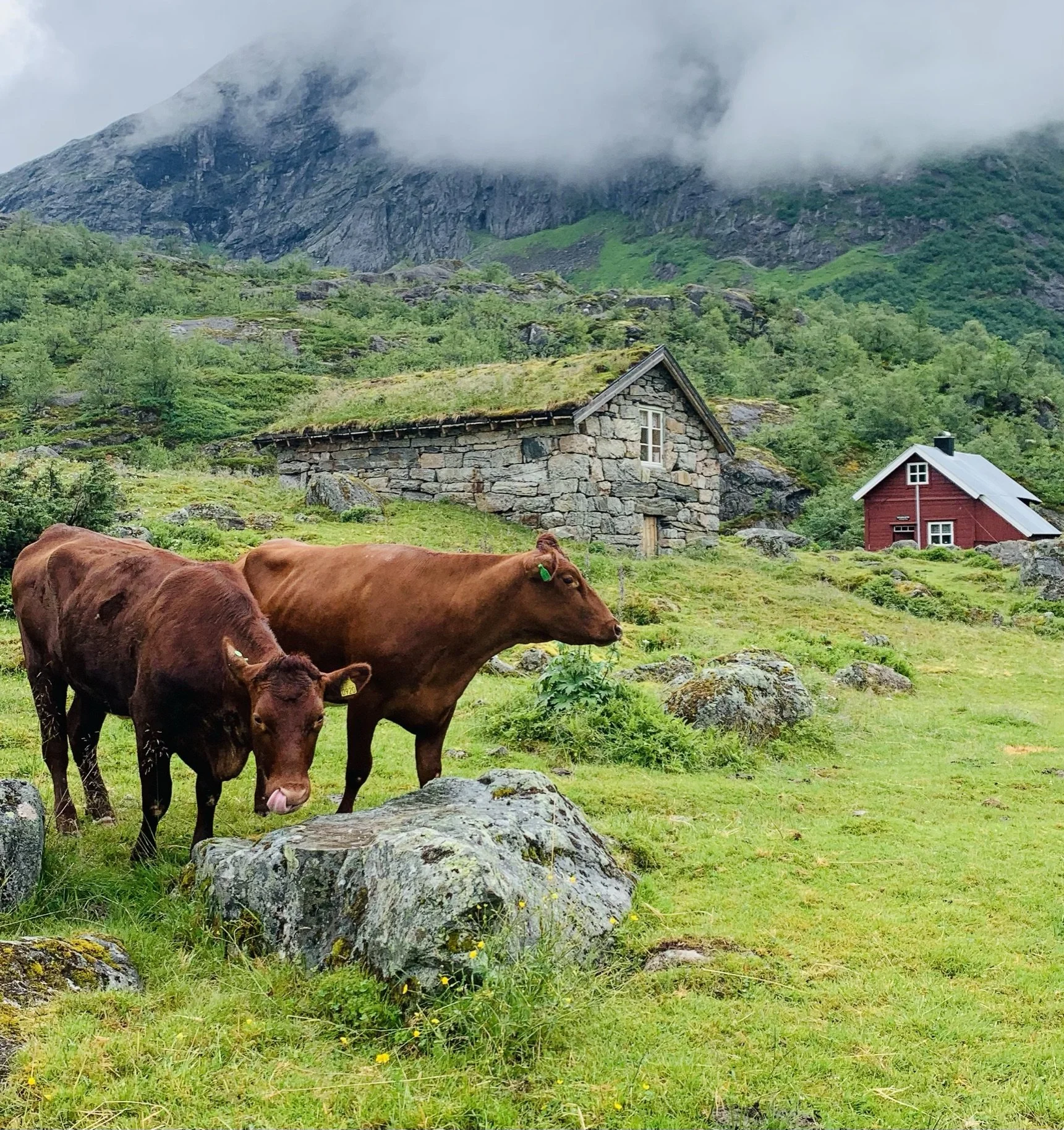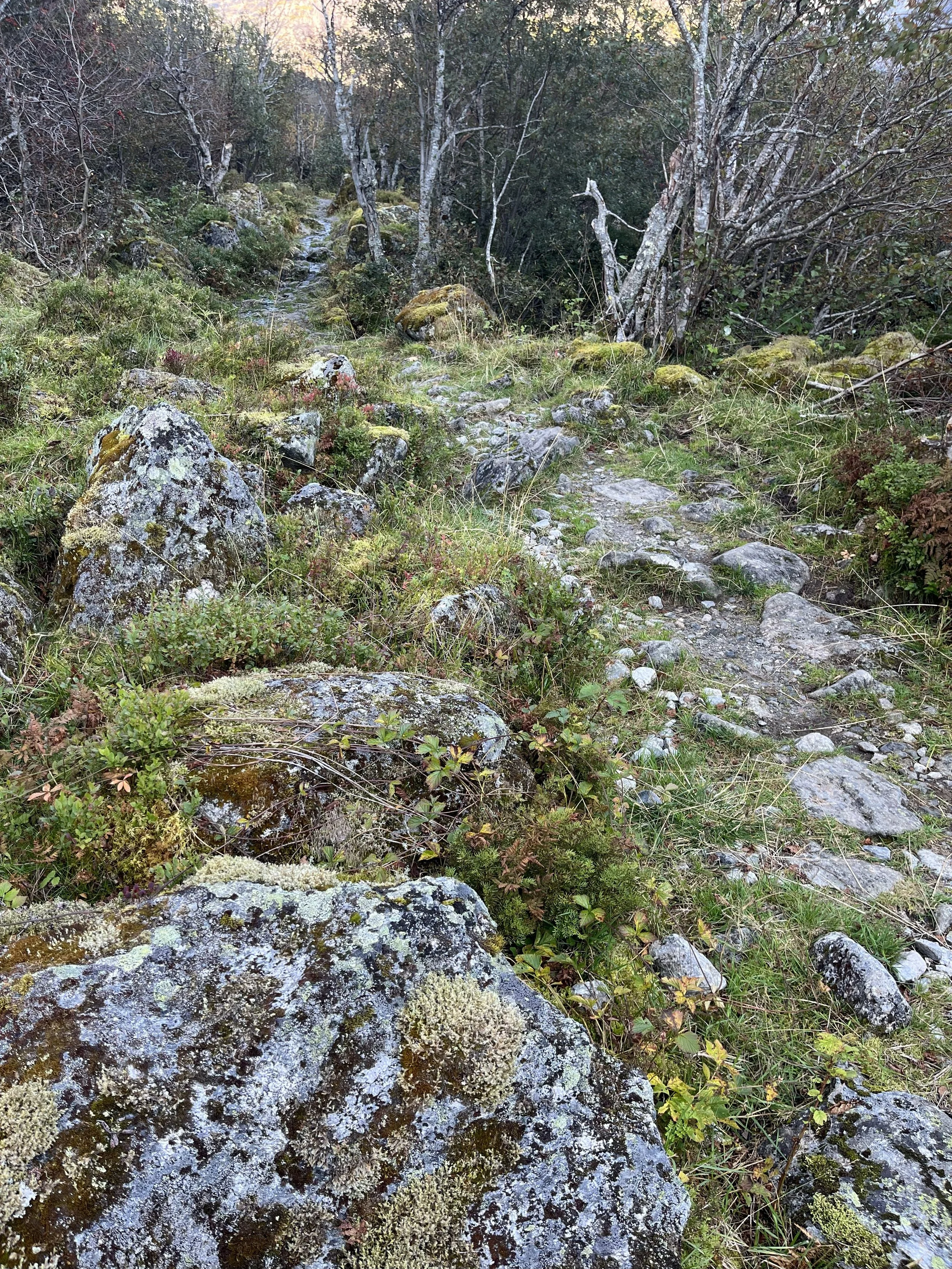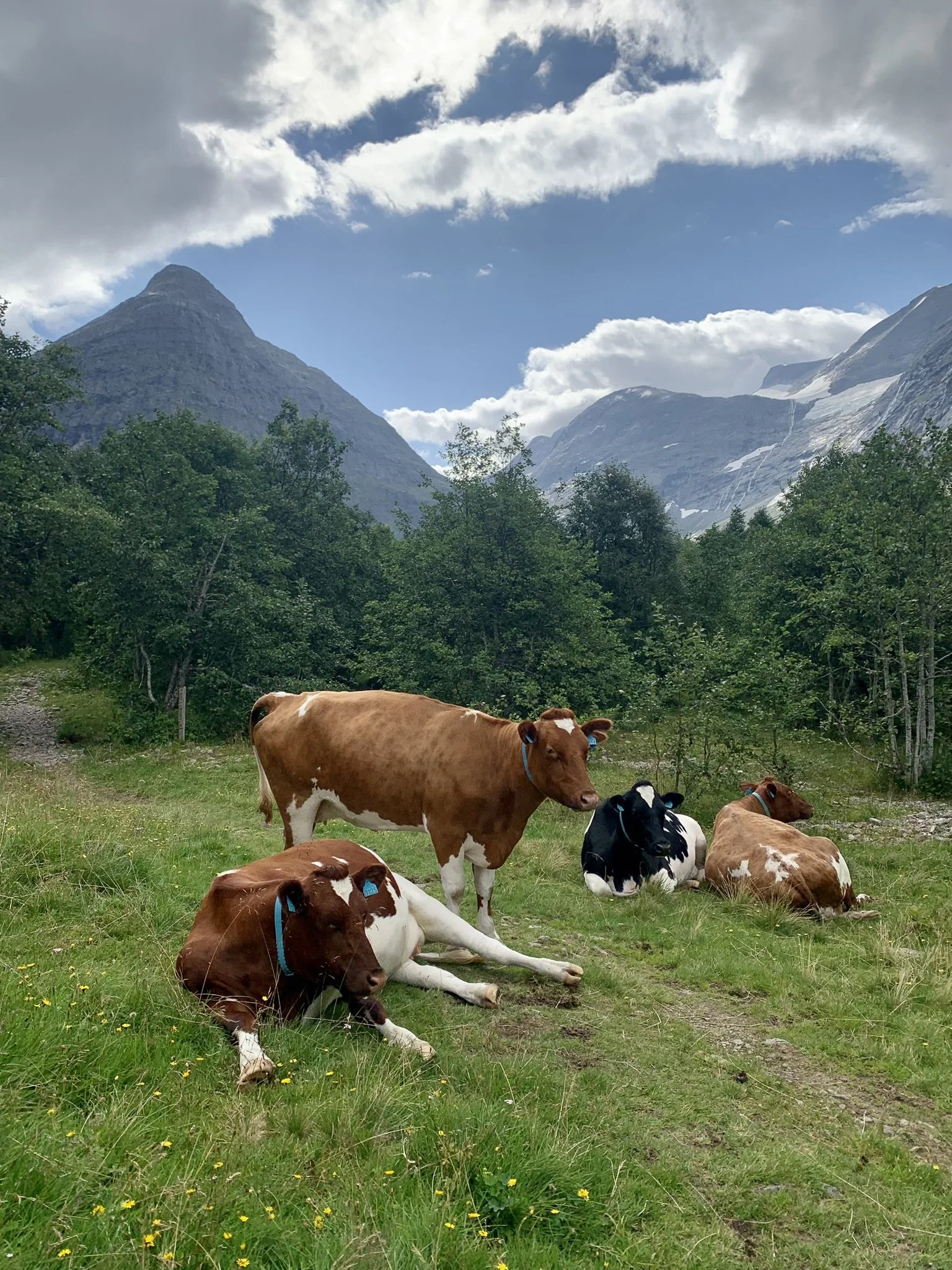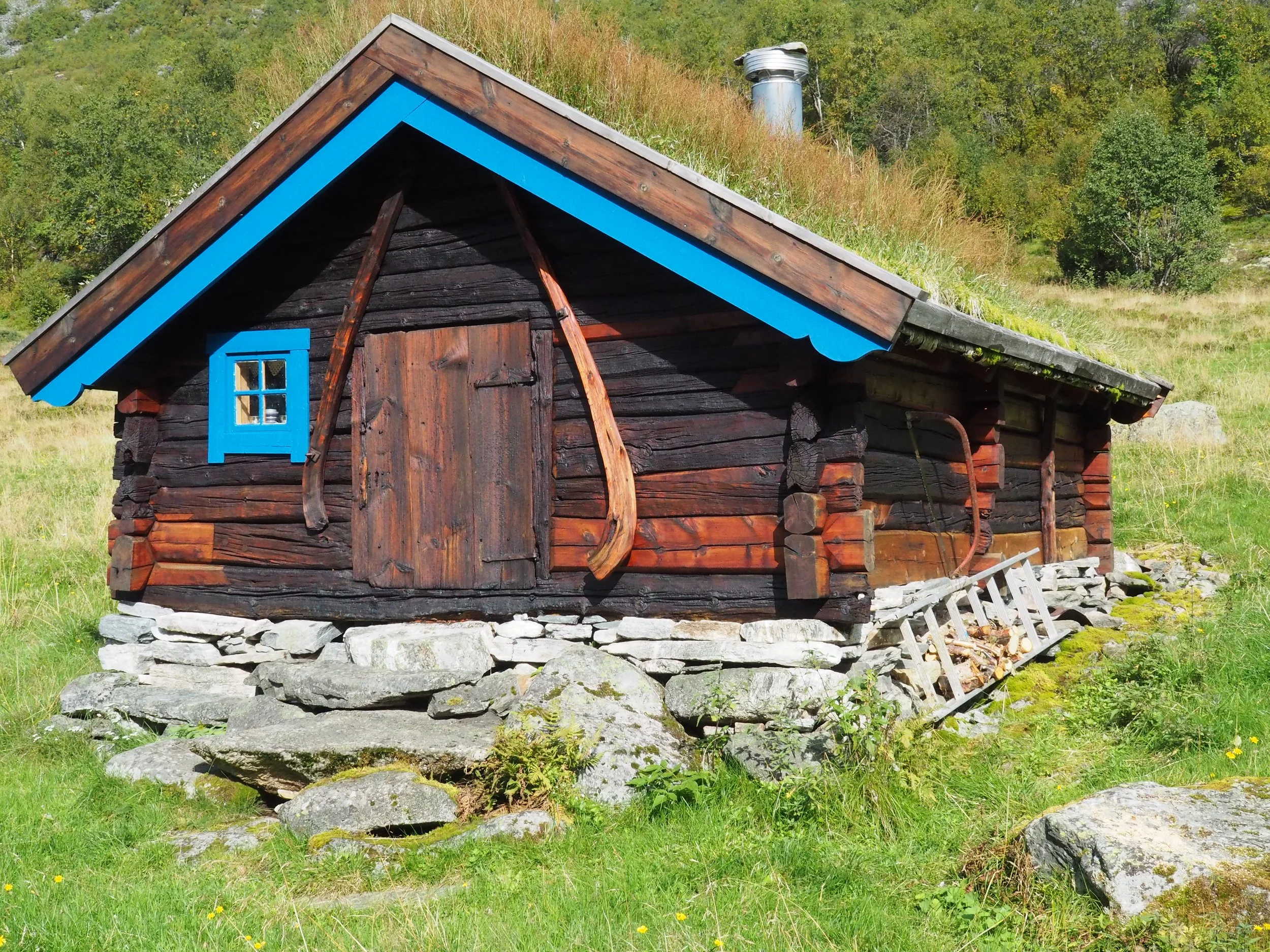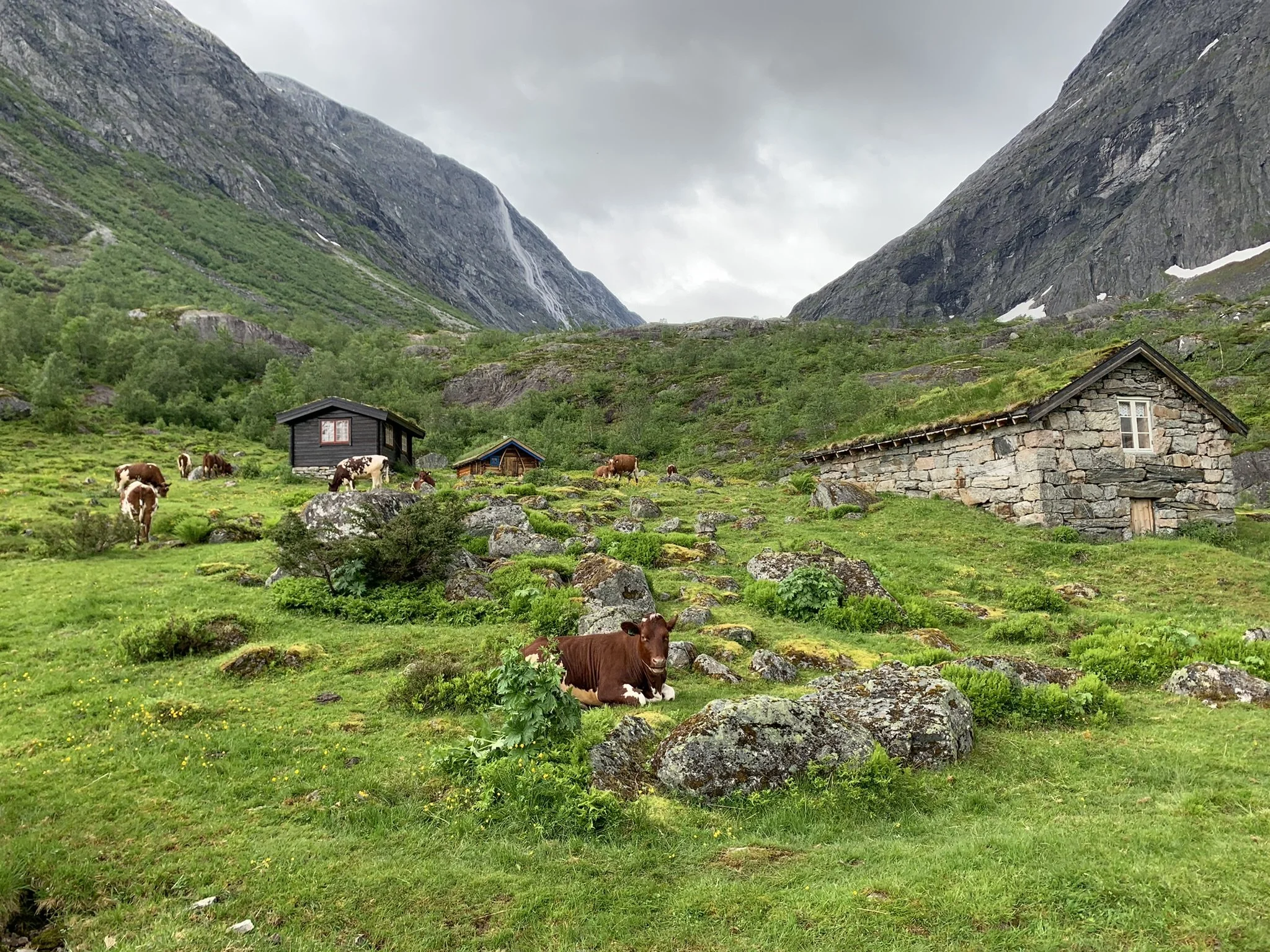Hike to Vesledalssetra
Vesledalssetra has long been the starting point for trips across the Jostedalsbreen. For several generations, glacier guides led tourists across the glacier to Skjåk and Sogn, and livestock traders led large herds of cattles across the glacier to Fåbergstølen and further on towards Austlandet. In our time, "Josten på langs" has been a popular ski trip in the spring.
Vesledalssetra is surrounded by high mountains, and glaciers hang in the valley sides. Nature is wild and beautiful. At this site, Erdalen divides into Storedalen to the southeast and Vesledalen to the east.
Difficulty: Moderate. The trail has been recently upgraded. Some sections run along bare rock.
Length: 3.6 km one way
Elevation gain: 200 m
Duration: 3 hours round trip
Season: Spring – Autumn
Parking: You can park at the parking lot at Loppeset. Remember to pay the fee!
Note: If you park at Greidung, the hike will be more challenging.
During snowmelt and after heavy rainfall, crossing Trollurgova dry-shod may be difficult.
There is no mobile coverage on the hike.
Hike description
From the parking lot at the end of the toll road to Vesledalssetra, it is approximately 3.6 km and a little over 200 meters in altitude. From Erdalssetra it is approx. 1.9 km to walk and 75 meters in height.
You should allow 3 hours for the entire trip – from Greidung 5 hours.
If you choose to drive the toll road you can pay in cash or you can pay to:
NAME: Setrevegen i Erdalen
IBAN: NO0437951560368 SWIFT/BIC: SOFJ 22
From Erdalssetra the path crosses Setreura and then a flat and open terrain through Setreøyane. There is good grazing here, and you will often encounter cows. Show consideration!
During the snowmelt and after heavy rain it can be difficult to cross Trollurgrova in dry shoes. But it is usually easy to pass here.
When you reach Lidabakkane, there is a steady climb to Reset. From there it is a gentle downhill to Vesledalssetra.
When you pass the last cabin at Erdalssetra, you can see this outdoor toilet on the right side of the path. It is open to everyone. There is an outdoor toilet at Vesledalssetra too.
A little further on the way towards Vesledalssetra, you can see a brook that comes out of the gravel on the left side of the path. Here you will find clean and good water to drink.
Setreura. The first part of the trail after passing Erdalssetra is rocky terrain.
Cows are often grazing in Setreøyane. Please be careful!
Here you pass Trollurgrova. During the snowmelt and after heavy rain it can be difficult to get across dry land.
Lidabakkane. Here the climb towards Vesledalssetra begins. We see Reset in the background.
Resbakken is the steepest part of the trail. You should walk a little carefully here, especially when going downhill.
View from Reset. The large plain is in the process of regrowing. Erdalssetra in the background.
Here we see the border between Erdalssetra and Vesledalssetra. Remember to shut the gate.
Kråkesølvbakken gets its name from the dark, shiny mineral kråkesølv (mica).
Kråkesølv is a word that is used in everyday speech for the mineral mica. Mica exists as muscovite (light) and biotite (dark). The mineral glistens like silver in the sunlight.
Cows often graze on Vesledalssetra. Be considerate!
Today, only one farmer has cows on Vesledalssetra. In the past, there were five farms that grazed here. 1954 was the last year cows were milked on Vesledalssetra.
The tourist cabin at Vesledalssetra was originally a log cabin that stood on Hjelle. The glacier guide Rasmus Greidung, bought the cabin in 1923. The tourists he was to lead over the glacier, needed a place to stay overnight.
The cabin was torn down, the logs marked and transported on horse sleigh. In 1924 the cabin was ready to receive guests.
Today, Indre Nordfjord Turlag (INT) has a lease agreement with the owner. The cabin has been renovated and is in good condition. The key is hanging outside the front door, and inside you can pay for food and accommodation.
Nigardselet/Eiaselet is the oldest cabin at Vesledalssetra, and it may be more than 200 years old. A few years ago, the cabin was restored, and it is now in good condition.
Oppigardselet blends beautifully into the landscape.
Selbøen at Vesledalssetra. Vesledalen in the background. The trail continues from here towards Fossen (a waterfall) and Vesledalsbreen glacier. See these.
The owners of the cabins:
Turisthytta: Svenn Jarle Mykløen
Oppigardselet: Ola Tjellaug
Lasseselet: Lasse Greidung
Nigardselet: Joar Tjellaug
1 refers to the walls after Segestadselet. Owner: Jørgen Fure
Here you can see all the mountain huts at Vesledalssetra from a slightly different angle. Notice the many large stones below the huts. Many of them are registered as old dwelling sites and are protected cultural heritage.
Stones with overhangs have been used as shelters and overnight places for a long time, dating back to the Bronze Age — and perhaps even earlier. You can read more about the history of the summer farm here.
Here you can see Stordalen. The mountain in the center is Teinosa (1,580 masl.). This is the direction you follow to reach the Erdalsbreen glacier and Strynekåpa.
You are looking towards the summit of Tomefjellet (1,835 m a.s.l.).
Read more about the history of Vesledalssetra here.
Text: Asbjørn Berge, 2025
Photos: Marit og Asbjørn Berge



